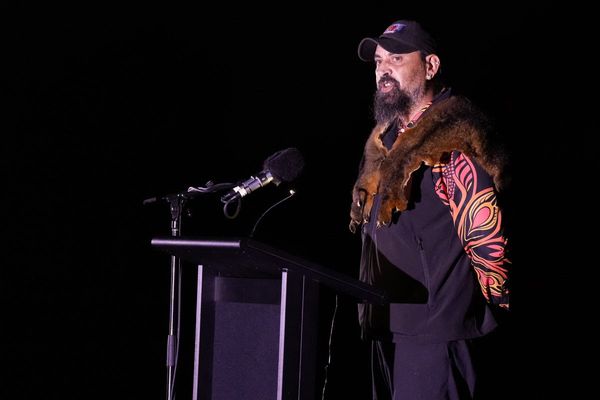Ford Motor Co. on Thursday unveiled its strategy for securing enough electric-vehicle batteries and key raw materials to hit ambitious electrification targets in the coming years.
The Dearborn automaker previously has said that it aims to hit annual EV production capacity of 600,000 units by late 2023 and 2 million by the end of 2026. It is investing $50 billion in electrification through 2026 as it targets adjusted operating profit margins of 10% companywide and 8% for EVs by that time. Shoring up supply chains — amid soaring commodity costs and fierce competition in an industry moving rapidly toward electrification — will be crucial to hitting those goals.
“Ford’s new electric vehicle lineup has generated huge enthusiasm and demand, and now we are putting the industrial system in place to scale quickly,” Ford CEO Jim Farley said in a statement. “Our Model e team has moved with speed, focus and creativity to secure the battery capacity and raw materials we need to deliver breakthrough EVs for millions of customers.”
Ford on Thursday detailed how it plans to hit its targeted 600,000 EV run rate by the end of next year: by building 270,000 Mustang Mach-Es for North America, Europe and China; 150,000 F-150 Lightnings for North America; 150,000 Transit EVs for North America and Europe; and 30,000 units of a new SUV for Europe.
To support that goal, Ford is adding lithium iron phosphate cell chemistry to complement the nickel cobalt manganese (NCM) chemistry it currently uses. LFP batteries, which EV leader Tesla, Inc. uses in some of its vehicles, are considered to have some advantages over other types of battery cell chemistries. The move to add LFP will help Ford reduce its reliance on minerals such as nickel and, at current costs, could bring 10% to 15% bill of material savings over NCM batteries, the automaker said.
Ford says it has secured enough battery capacity from suppliers — 60 gigawatt hours — to support its EV target through 2023.
Battery maker Contemporary Amperex Technology Co. Ltd., or CATL, will supply full LFP battery packs for the Mach-E in North America starting next year, and for the F-150 Lightning starting in early 2024.
And existing battery suppliers LG Energy Solution (LGES) and SK On have taken steps to support Ford's capacity target for late 2023, the automaker said. LGES has doubled capacity at a plant in Poland to support additional NCM cell production for the Mach-E and E-Transit. And SK On has added capacity at facilities in Atlanta and Hungary to support the F-150 Lightning and E-Transits through late next year.
Meanwhile, Ford says it has sourced about 70% of the battery cell capacity it needs to hit the 2 million EV run rate by the end of 2026.
It has signed a non-binding memorandum of understanding with CATL to "explore a cooperation" for supplying batteries in China, Europe and North America. And the company has signed an MOU with SK On and Koç Holdings to start a battery joint venture in Turkey.
Starting in 2026, Ford plans to have 40 gigawatt hours of LFP capacity in North America. That will complement the three battery plants Ford previously announced in Kentucky and Tennessee as part of a joint venture with SK On.
The company also announced some of its plans around sourcing key raw materials needed for battery cell production. It's working with a mining company and has secured "most" of the nickel it needs through 2026.
Ford has signed non-binding MOUs with Vale Canada Ltd. "to explore potential opportunities across the EV value chain," according to a news release. The automaker is "exploring" a three-way nickel processing project with PT Vale Indonesia and Huayou Cobalt, and separately a nickel off-take agreement with Huayou. And the company said a multi-year nickel supply agreement with BHP "could start as early as 2025 and may involve additional commodities over time."
Ford also announced several lithium supply contracts it has secured. The automaker has a non-binding MOU with Rio Tinto for a potential "significant" lithium off-take deal sourced from Argentina, for example. That deal also could include copper sourcing.
The Blue Oval also has signed a non-binding letter of intent with EcoPro BM and SK On to establish a cathode production facility in North America. It has an off-take agreement with ioneer for lithium carbonate sourced from Nevada. Compass Minerals and Ford have a non-binding MOU for lithium hydroxide and lithium carbonate from Utah. And Syrah Resources and SK On have a non-binding MOU with Ford to supply off-take for natural graphite from a processing site in Louisiana.
“Our team has been actively engaged with partners in the United States and around the world,” Lisa Drake, Ford Model e vice president, EV Industrialization, said in a statement. “We will move fast in the key markets and regions where critical supplies are available, meeting with government officials, mining companies and processors and signing MOUs and agreements that reflect Ford’s ESG expectations and underpin Ford’s plan to bring EVs to millions.”







